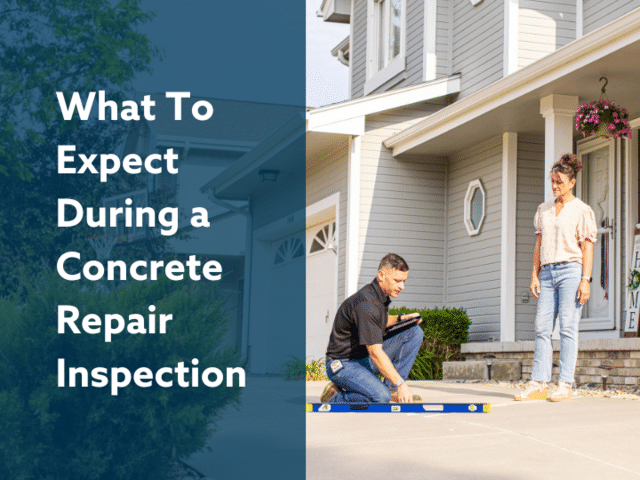Wall Anchors For Extreme Foundation Wall Problems

GeoLock wall anchors can help with any wall foundation problems - even the most extreme. Learn about how this product could be the solution for your home!
Wall anchors could be the solution you need for bowing and buckling walls. Learn more about how Thrasher can help with warrantied products.
Our unique foundation wall anchor system is designed with galvanized steel, allowing for long-term corrosion resistance. Each anchor system also includes a 25-year warranty against manufacturing defects, and each installation includes our performance warranty.
This innovative wall anchor system will permanently stabilize your foundation wall by anchoring your walls to the hard-packed virgin soil beyond your foundation. After installation, wall anchors can often be tightened to straighten your foundation walls further and pull them back to their original position.
Advantages of Our Wall Anchor System:
- Minimal disturbance to lawn & landscaping
- Year-round installation
- Permanently stops inward movement of walls
- Potential to straighten walls over time
- 25-Year Manufacturer's Warranty
If you prefer to minimize interruption of your lawn and landscaping, we do offer other solutions such as wall brace and beam solutions.
The PowerBrace(TM) is a patented foundation wall repair system designed to stabilize failing basement walls and provide the potential t straighten walls over time.
These steel i-beams will stabilize the wall in its current position without any further adjustment. Over time, the PowerBrace(TM) System can be tightened to make bowing or tilting walls straighter.
Technical Features
- No outside excavation required
- Can be tightened to allow for the improvement of the wall over time
- All components are zinc-coated for rust resistance
- Neat, clean appearance in the basement
- Minimal disruption of basement space
For extreme failure situations, sometimes, these solutions are not enough. In many instances, homeowners wait too long to decide to stabilize their foundation wall. When this happens, it is still not too late! Homeowners always have a few options. With the options above, the homeowner's goal is likely to stabilize their foundation, but most homeowners will want to finish their basement and enjoy the space right away. Wall anchors may take some time before your wall has returned to its original position.
Your foundation repair expert can talk with you about options to quickly and effectively restore your foundation wall to its original, straight alignment.
The soil surrounding your home's foundation can place a great deal of pressure on your basement walls. That pressure varies depending on the types of soils present, how much moisture is in those soils, and how far underground your foundation was placed.
Hydrostatic pressure, expansive clay soils, frost, incorrectly placed downspouts, and poorly graded soils can also contribute to foundation issues.
While there's constant pressure pushing in on the foundation, there's no equalizing pressure pushing out! If the outside pressure is greater than the strength of your walls, they will begin to fail.
Cracks in the masonry are usually the first sign of wall failure. Sections of the wall can start to buckle, bow, and tilt inwards. Left unchecked, this damage will worsen and can result in complete wall failure and collapse.
The good news is that the foundation damage mentioned above can be repaired using proven, long-lasting techniques that are much more affordable than replacing the foundation. Most often, we use a wall anchor system to stabilize bowing and buckling walls. Once the wall anchors have been installed, the system is gradually tightened to their original straight, plumb orientation a little bit at a time.
In some cases, bowing and tilting walls can be straightened right away as opposed to over time. This can be particularly helpful if you plan to finish the basement in short order or put your home up for sale.
Regardless of the reason, basement walls can be excavated and straightened immediately rather than tightening the walls periodically.
Excavate and straighten your walls:
To relieve pressure placed on your foundation walls from outside moisture and soils, we begin the wall straightening process by excavating the dirt from around the foundation.
Exterior excavation is only necessary when the foundation walls need to be straightened right away, such as when the walls are dangerously damaged or you have scheduled the basement to be finished. In typical scenarios, this step is not a necessary part of all Geo-Lock(TM) wall anchor system installations. Once the soil is removed from your foundation walls, the walls can be straightened.
Shotcrete/Shotlock:
For this application, GeoLock anchors or PowerBraces are installed as usual. After the wall support materials are installed, the crew members will build a rebar cage and frame a "new wall" inside your existing wall. Once this is complete, the crew will use specialized equipment to spray a new concrete wall inside the old failing wall. Once this is complete, and the concrete is cured, your basement can be finished as usual
Learn how GeoLock wall anchors can solve the most extreme foundation wall issues.
Article Categories:




